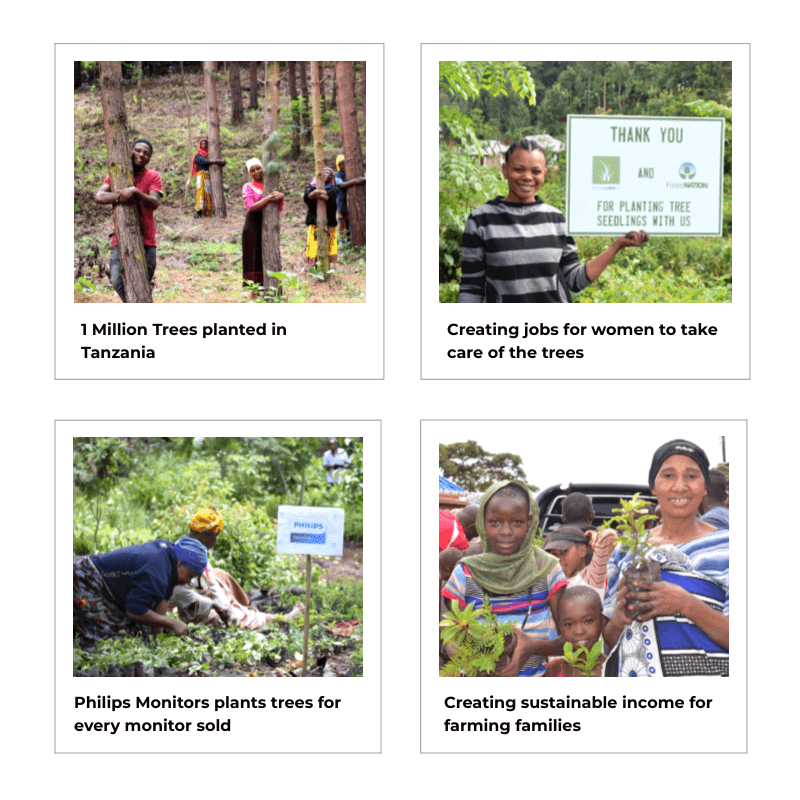Plant Trees, Protect Your Future
Take control of your vision for a future that's rich in resources and beauty for everyone. Imagine a World where everyone plants trees, gets connected to nature and to each other.
230 Million Tree Goal For Tanzania
Our goal is to plant 230 Million Trees in the heavily deforested Usambara biodiversity hotspot.
This will create jobs, income, and food security for local communities. Your gift will help them become guardians of Mother Earth living in harmony with nature!
We also plant for...





How it works
1. Nursery
Saplings start life in a nursery growing under the care of nursery staff for 6 to 9 months before they're ready to be planted. 80% of the staff employed in the nurseries are women.
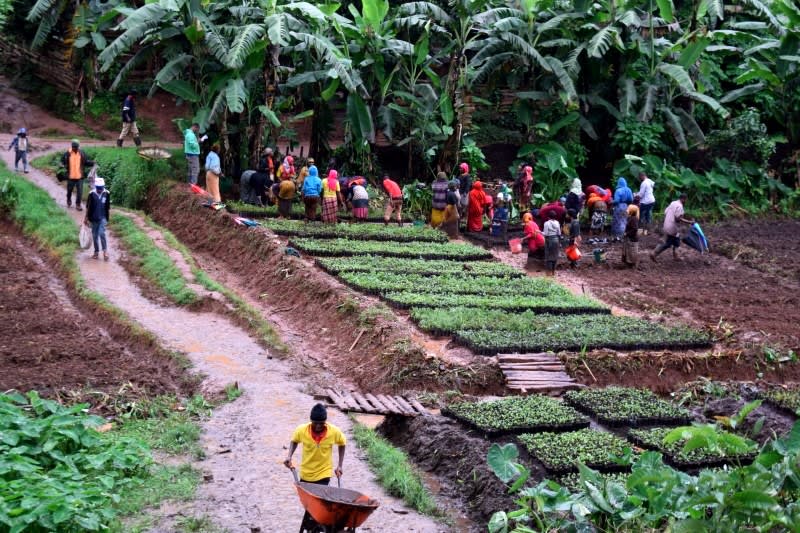
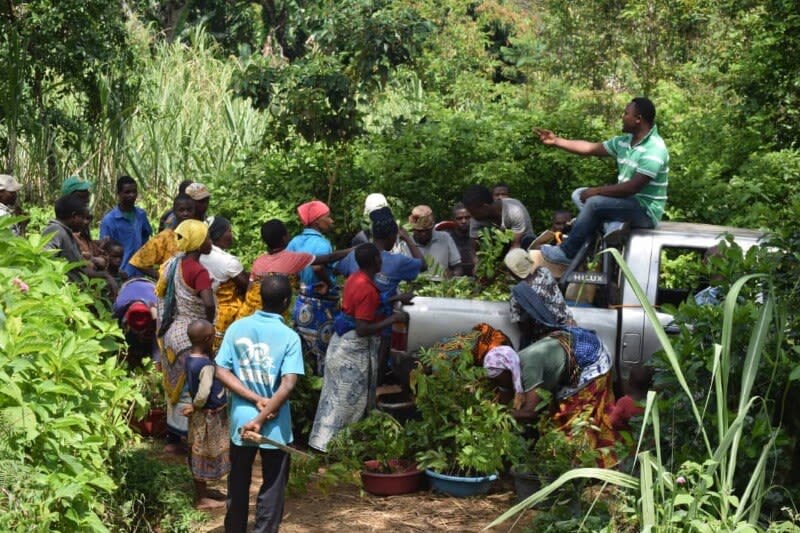
2. Land Preparation
While saplings grow in the nursery, the land is prepared by the planting team. This includes clearing invasive weeds and shrubs, and then creating space for planting trees.
3. Monitoring
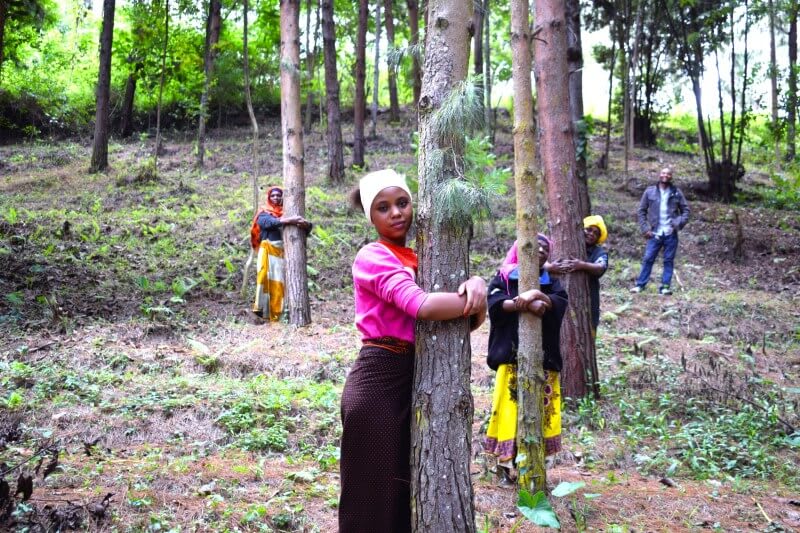
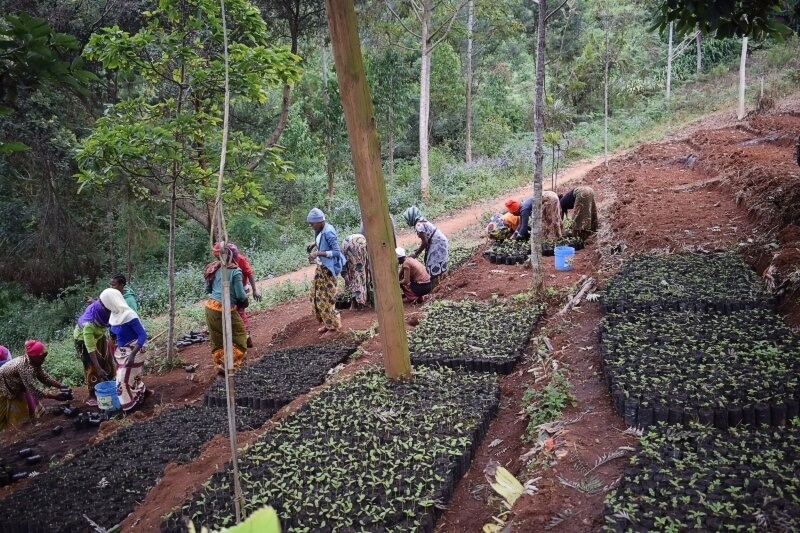
Planting Capacity
Trees to be Planted: 229,729,000 Trees
Planting Area: 229,729 Hectares
Timeline: 3 years
100% Survival Rate is achieved with a Replenishment program where replacement trees are planted for trees that don't survive at the end of each year.
* For every 10,000 trees planted at least double that will germinate naturally within following 5 years.
Planting Areas
We have scoped out 15 major planting sites where there's an urgent need to plant trees. These include Nature Reserves, Mountains, Farm Lands, River Basins etc.
View the Simple Interactive Map for details and requirements for each area.
Map also includes all our active Tree Nurseries and School Nurseries as part of our Green Schools Program.
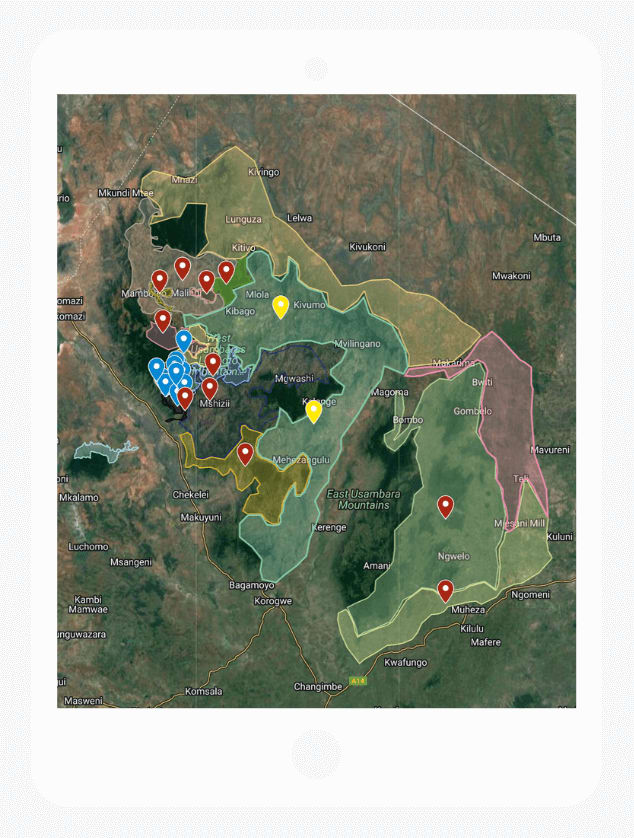
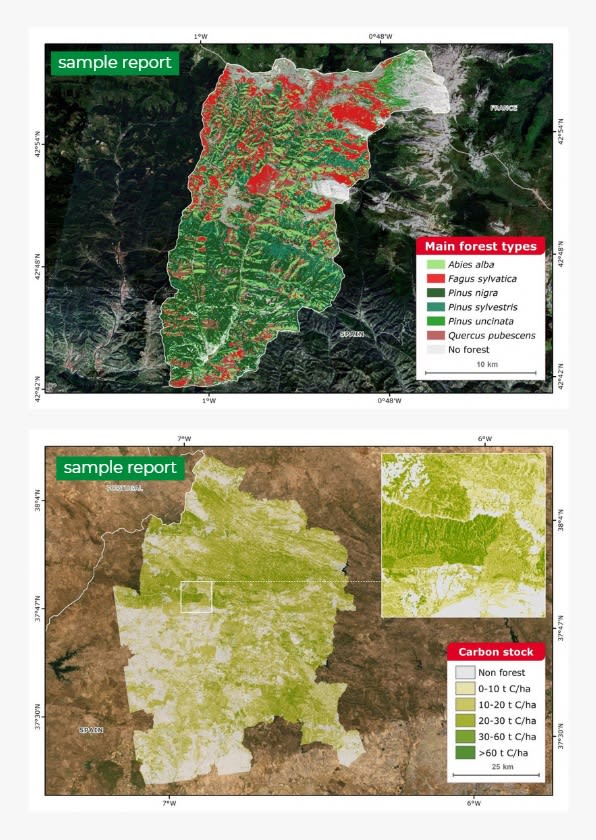
Satellite Reports To Prove Your Impact
We have partnered with industry leaders in satellite earth observation technology.
We will first create a Satellite Report to prove deforestation and identify the need and opportunities to reforest and restore the land.
You will see the impact of your Forest through visual Satellite Reports that prove the growth and health of your trees.
We will provide continual analysis of impact metrics like Vegetation Index, Land Topography, Land Degradation, Existing Vegetation, Fire and Deforestation, Abiotic Drought Damage, Soil Feasibility Study.
This technology enables us to calculate Carbon captured by the trees.
Tree Species
Agroforestry techniques are used to plant a mix of Indigenous tree species for land recovery, Fruit trees for community income, and Woodlot products used as timber offtake (if required).
Indigenous: Makhamea lutea, Ocotea usambarensis, Ficus sur, Ficus thorningii, Laurofia cafra, Corton megalocarpus, Podocarpus usambarensis, Cordia africana
Fruit: Moringa oleifera, Peach, Plum, Loquat, Pears, Apple, Banana, Robusta Coffee
Others: Newtonia bachanii, Albizia schimperiana, Acrocarpus flaxinifolius, Grevellia robusta, Percea americana
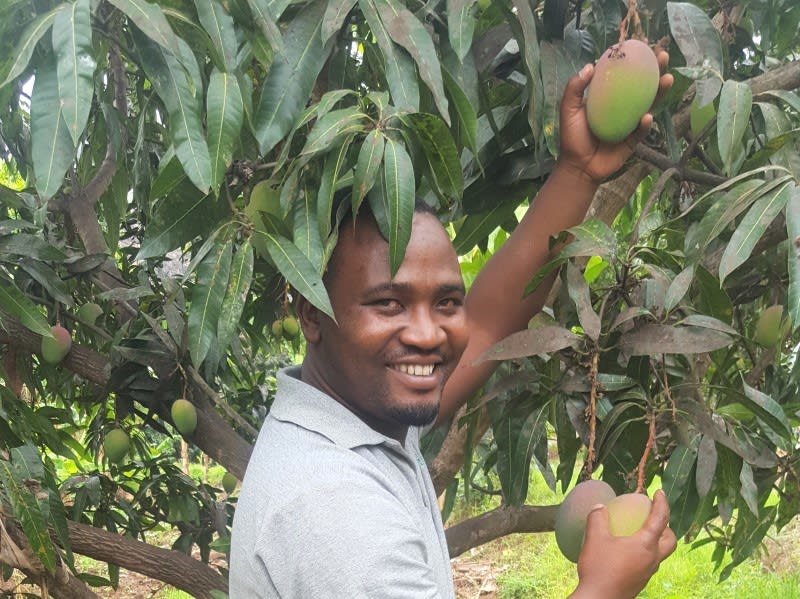
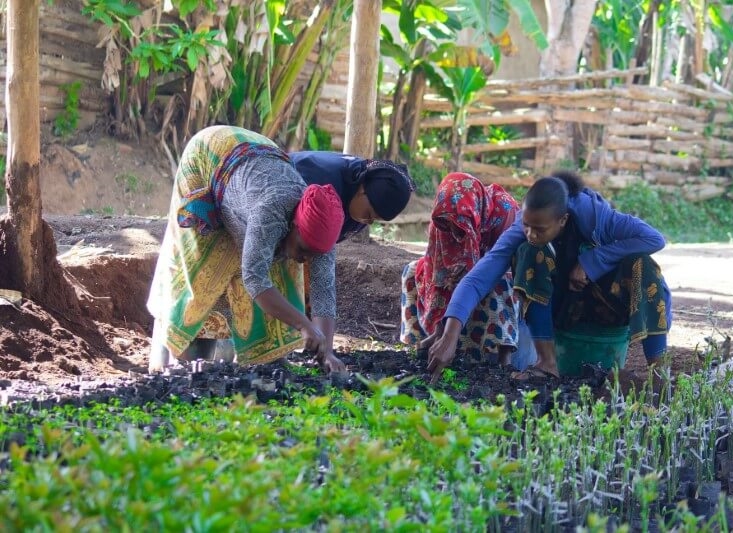
Jobs Created
80% of the staff employed in the nursery are women! Here are some of the common things they do:
- Growing and taking care of the trees in the nursery
- Transporting saplings to planting site
- Land preparation for planting
- Planting and maintenance of your trees
- Harvesting produce for family consumption and selling purposes.
Income Created
Fruit, Moringa, Coffee seedlings are provided to families to plant on their farms.
Once they mature, they produce a regular harvest, yielding food and income through selling of fruit, medicine, oil etc harvested.
These farmers now earn $173 for every 100 trees planted.
* projected income estimated based on incomes generated for 2020-21 planting and harvest season
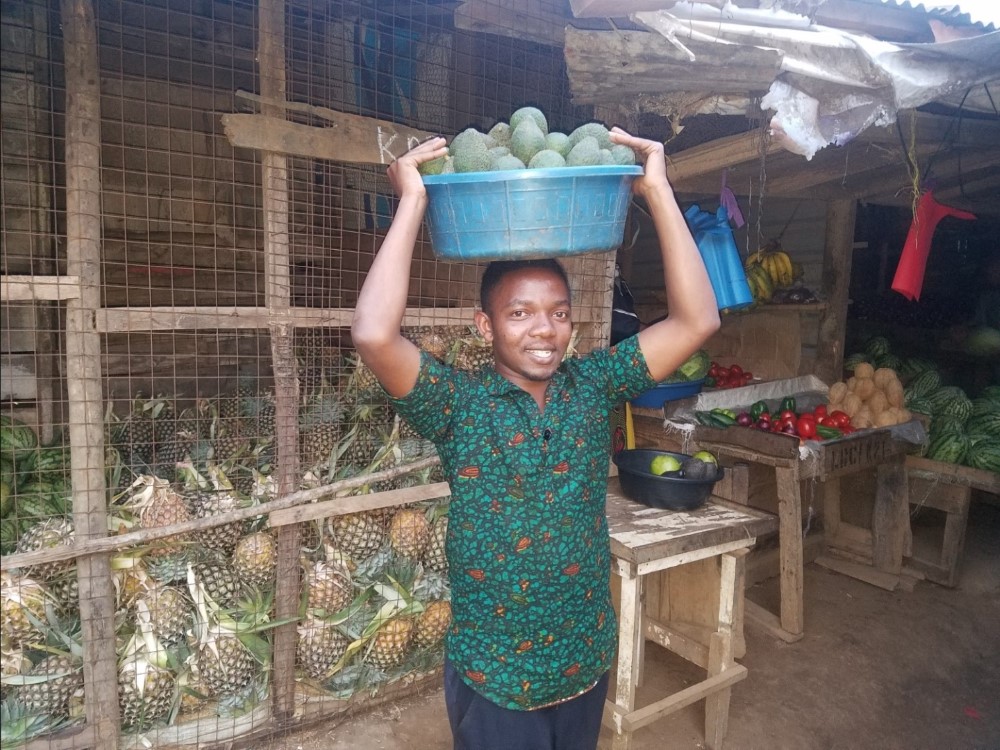
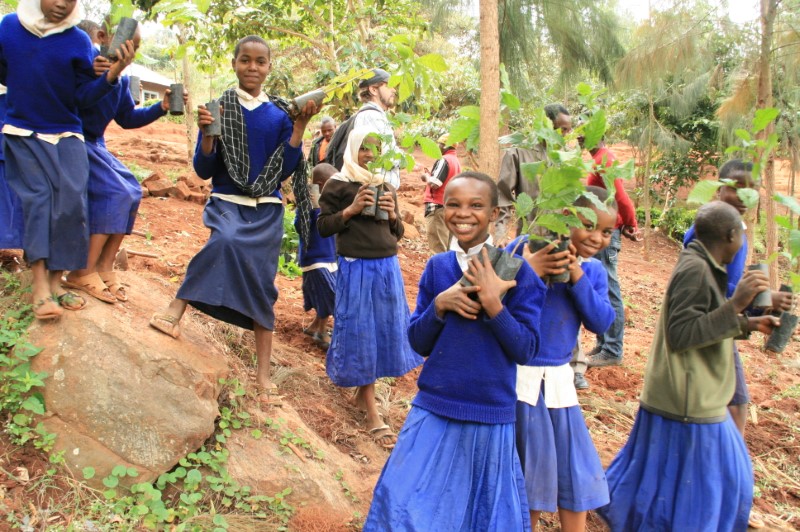
Community Impact
🌳 Green Schools Program - providing education and empowering students to reforest their future.
🌳 Planting trees along riverbanks, which ensures a fresh water supply.
🌳 Providing additional timber for the local wood industry to source.
🌳 Enhancing natural resources that help farmers produce better crops.
History of Tanzania
The United Republic of Tanzania became independent in 1964 when Zanzibar and Tanganyika merged. Often referred to as “The Cradle of Civilization,” northern Tanzania is where the oldest human skull was found.
The citizens hold general elections every five years to name their leaders, even with 90% of Tanzanians living in rural areas. Over 120 tribal groups are represented across the country.
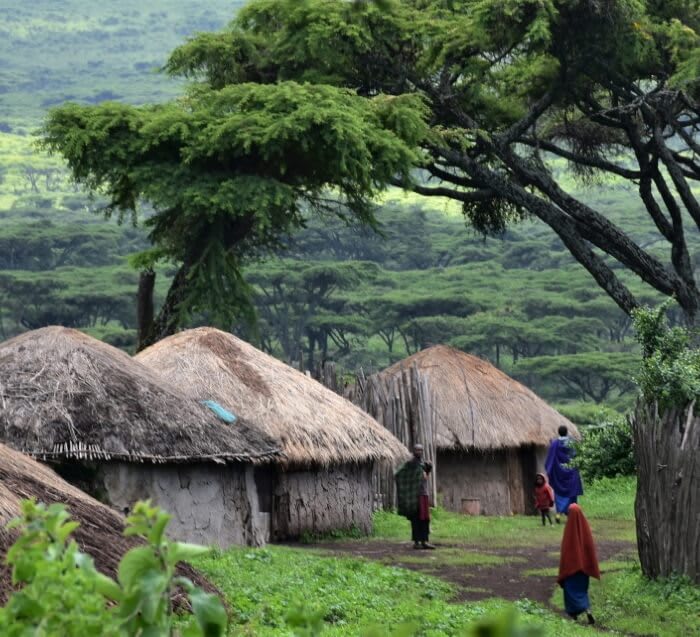
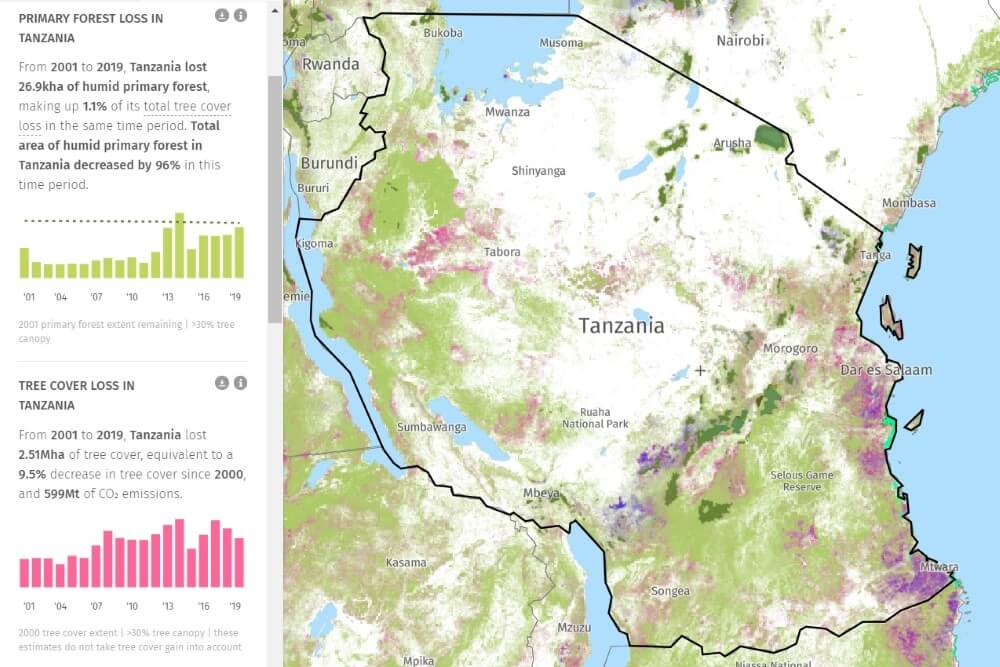
Geography of Tanzania
Tanzania is the largest of all countries in East Africa and is bordered by the Indian Ocean. Once entirely bush and savanna, the landscape is now semidesert.
The country is home to over 400 million wild animals, which include zebras, giraffes, lions, wildebeests, crocodiles and giant turtles. In addition, Tanzania boasts the largest population of elephants that remain.
5 Fast Facts About Tanzania
- Jane Goodall completed her famous chimpanzee studies in Tanzania’s Gombe Stream National Park.
- Tanzania’s Serengeti National Park has changed very little in over a million years, earning it the title of one of the oldest ecosystems on Earth.
- Swahili and English are the official languages of Tanzania, though over 100 more languages are also spoken.
- Tanzania is home to the tallest mountain in Africa—Mount Kilimanjaro, which stands nearly 6,000 meters above sea level.
- The wildlife in Tanzania represents over 400 different species of animals.
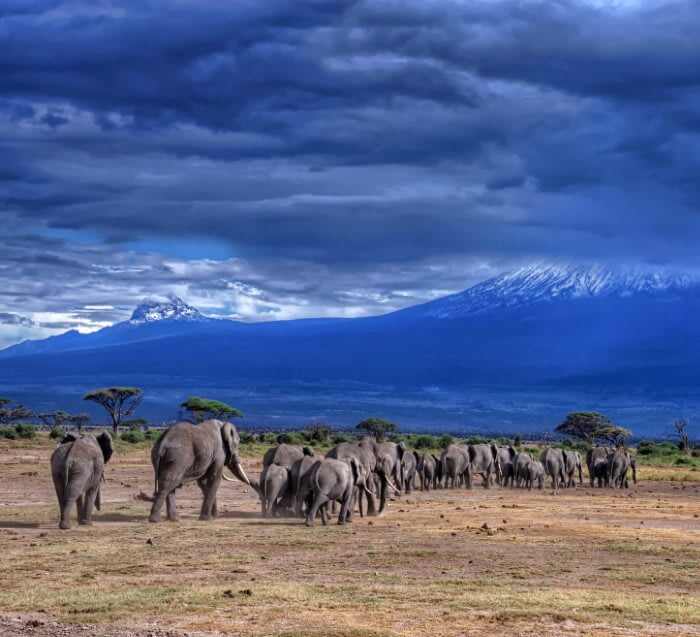
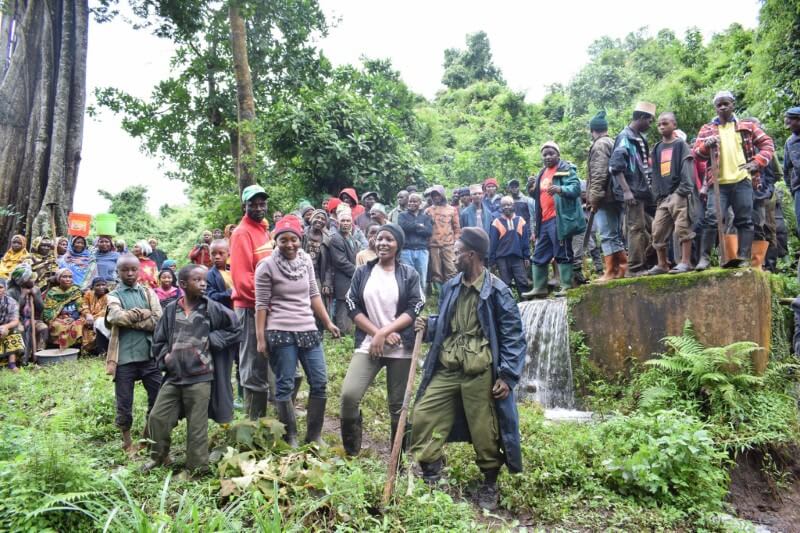
ForestNation Certified
All trees are registered with the United Nation’s Environment Programme’s (UNEP) “Plant for the Planet” Trillion Tree Campaign.
All trees absorb C02, offset carbon emissions and create sustainable livelihoods. Projects focus on contributing toward the UN Sustainable Development Goals.
How 230 Million Trees Will Be Funded
🌳 We are inviting companies to become stakeholders in this project. Stakeholders can fund the whole project or choose areas to fund.
🌳 You can earn an ROI on your investment using ForestNation gifts and services.
🌳 Carbon Credit Opportunities - We are actively pursuing the creation of verified carbon credits from this forest stock, to serve these communities with ongoing long term support.
